Disclaimer: This post may contain Amazon affiliate links. Sudachi earns a small percentage from qualifying purchases at no extra cost to you. See disclaimer for more info.
Featured Comment:
“A Simple and amazing recipe… It makes a great soup base for so many other recipes. Thank you!!”
– Gi lim
What Does My Favorite Dashi Broth Contain?
The essence of Japanese cuisine lies in its dashi broth, a liquid gold that infuses dishes with a depth of flavor that’s both subtle and profound.
In this recipe, I used a combination of niboshi (dried sardines), katsuoboshi (dried bonito flakes), and kombu (dried kelp).
While dried bonito flakes and dried sardines are rich in inosinic acid, kelp brings forth the robust umami of glutamic acid. Niboshi, with its peptides, adds a layer of richness and mildness, making it a valuable addition to the foundational duo of dried bonito flakes and kombu.
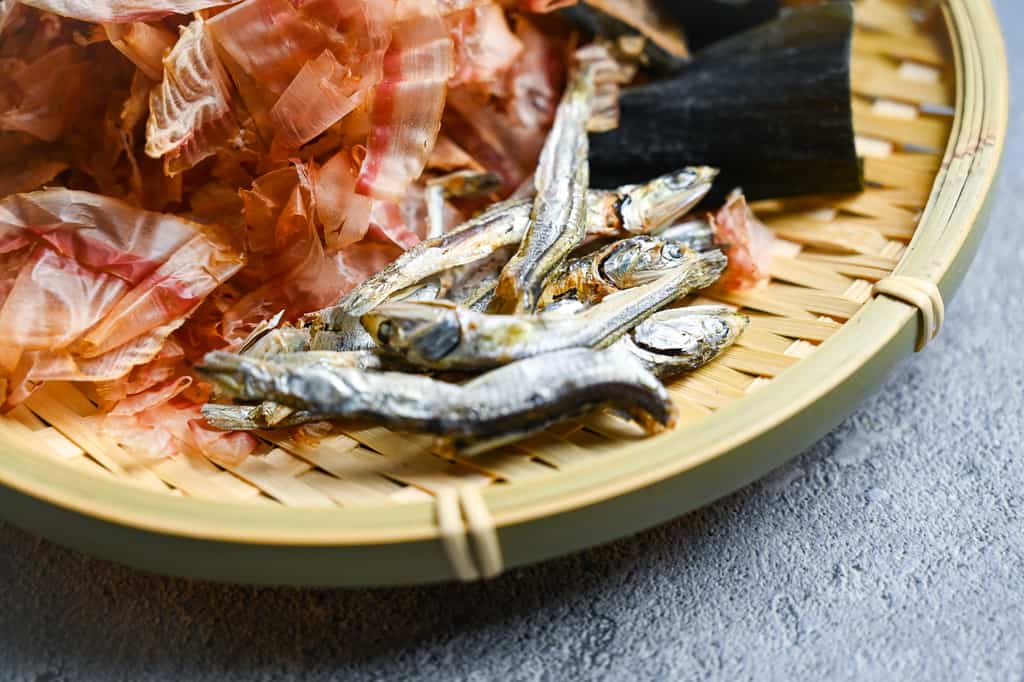
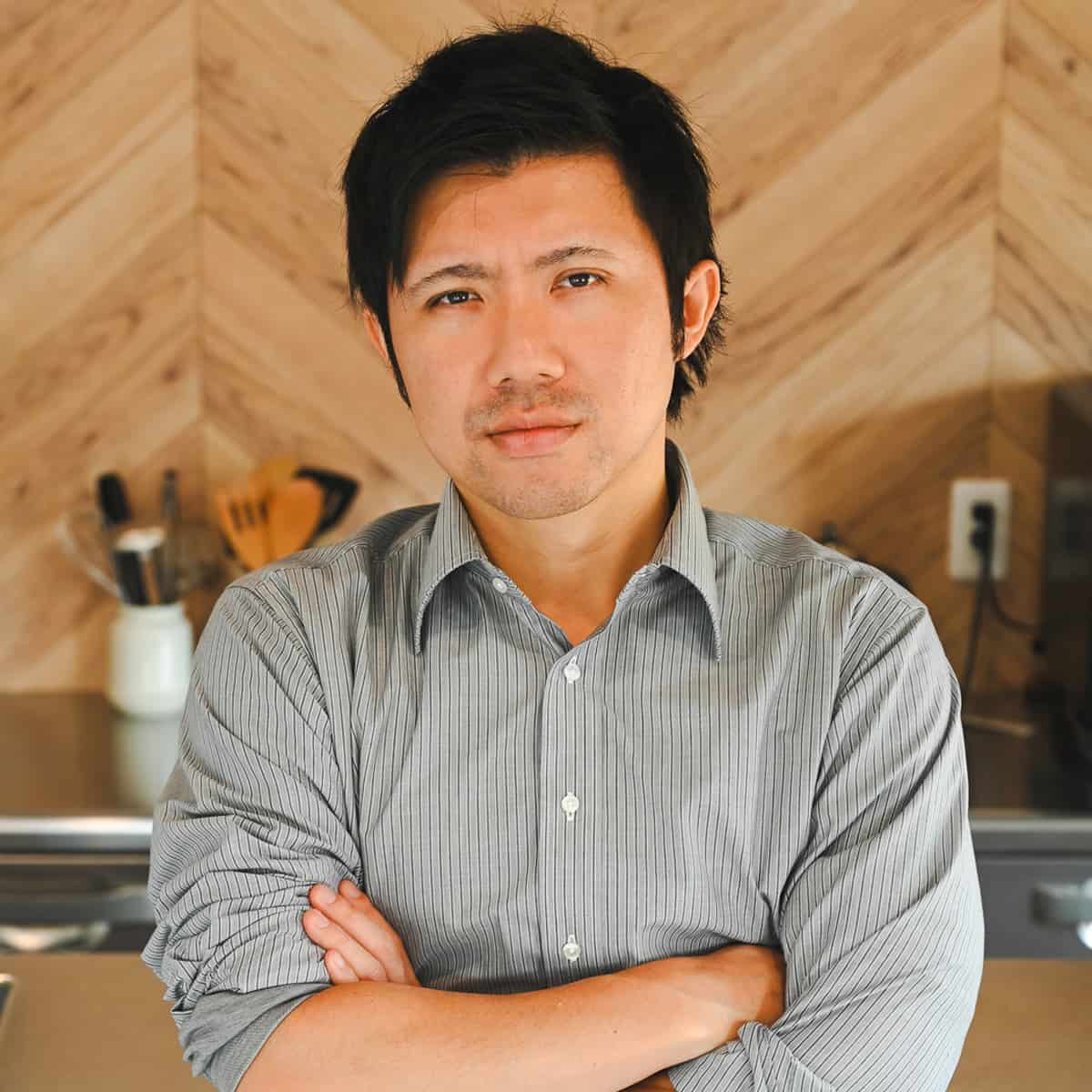
How I Developed This Recipe
When crafting this Awase Dashi recipe, I aimed to elevate beyond the basic bonito flakes and kelp dashi. I ventured to add more depth and layers to the flavor profile.
The outcome was so good that it earned the title “My Favorite Dashi.”
Its versatility shines through in many dishes, from the comforting embrace of miso soup to the flavorful depths of simmered dishes and takikomi gohan.
Ingredients You Will Need
- Cold Water: To achieve the optimal Japanese dashi, it’s recommended to use soft water with a hardness between 0 to 30. This type of water is ideal for drawing out the rich umami flavors. Conversely, hard water can interact with the proteins in kelp, which might lead to a slightly bitter aftertaste.
- Dried Sardines (Niboshi): Niboshi, or iriko, are tiny dried sardines. Even if you’re not a fan of sardines, these dried ones impart a deep, savory flavor, making the dashi exceptionally tasty.
- Dried Kelp (Kombu): Among the various kelp types, Rausu, Rishiri, Ma, and Hidaka kelp stand out. Dive deeper into the characteristics of each in my complete kombu guide.
- Bonito Flakes (Katsuobushi): Like kombu, Bonito flakes also have multiple types and grades. For a more precise understanding and to make an informed choice, refer to my in-depth katsuobushi guide.
Curious about the exact brands and products that bring my recipes to life? Discover the brands and ingredients behind my recipes at the Sudachi Amazon Storefront. Explore my handpicked pantry essentials and find your next kitchen favorites!
Jump to Full Recipe Measurements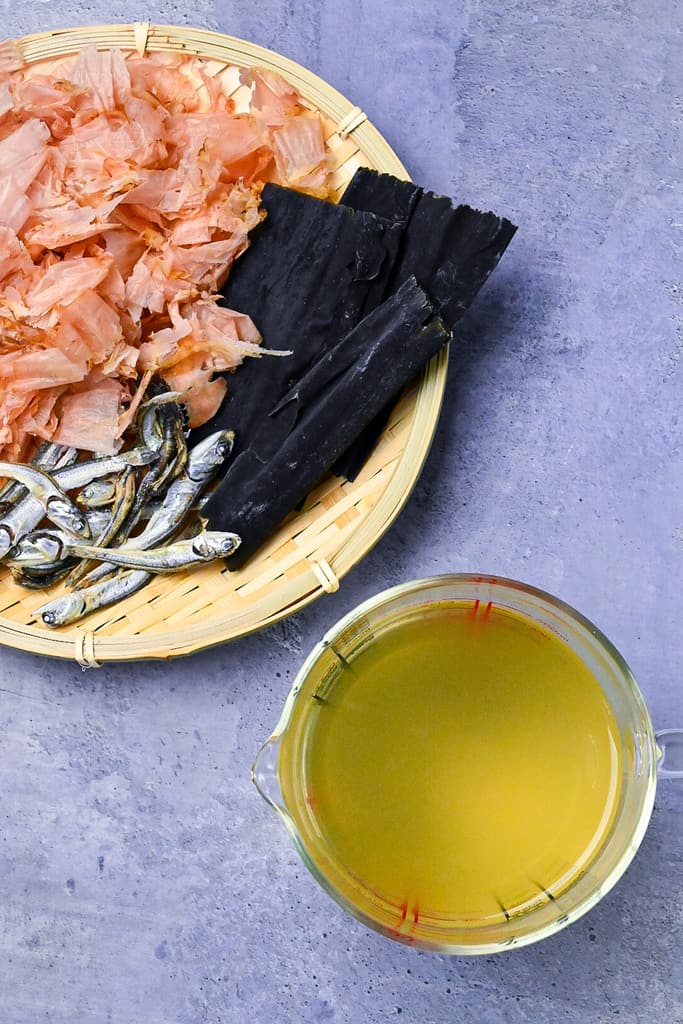
Visual Walkthrough & Tips
Here are my step-by-step instructions for how to make My Favorite Awase Dashi at home. For ingredient quantities and simplified instructions, scroll down for the Printable Recipe Card below.
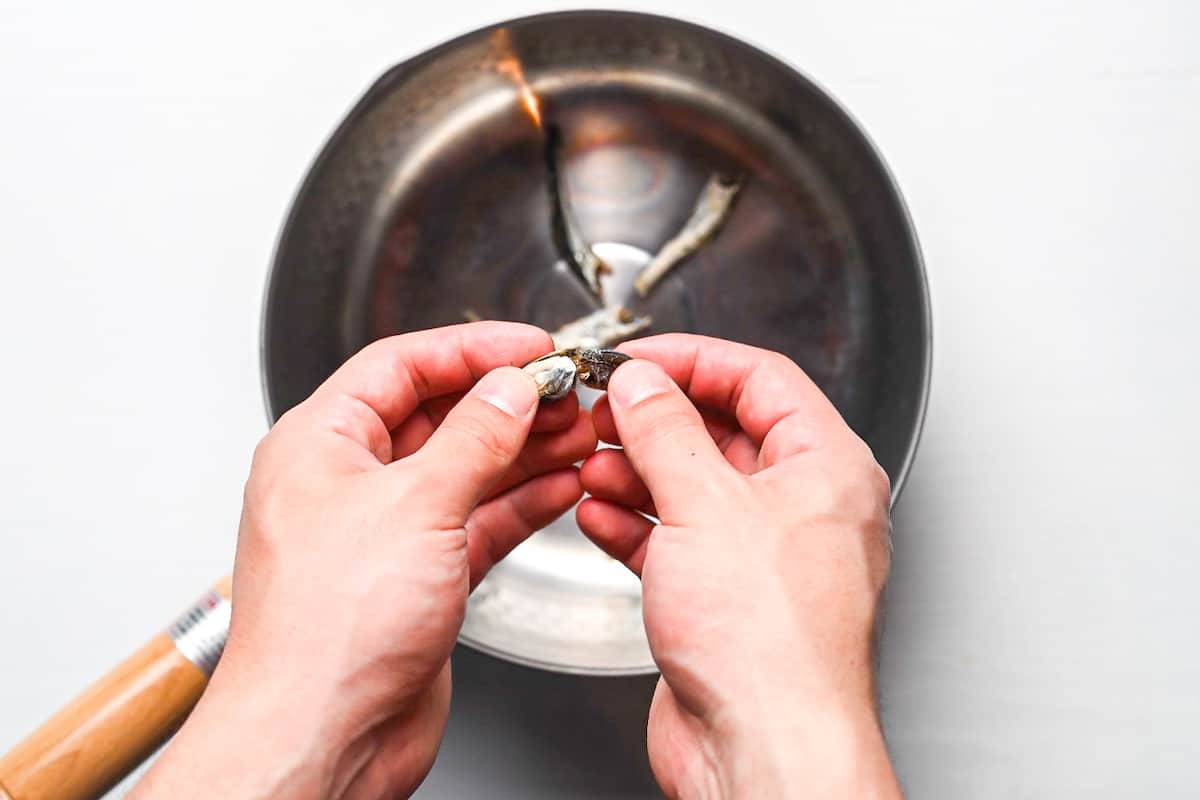
Break the heads off of the dried sardines and discard them, leaving them on can create a bitter taste in your dashi. Place the bodies in a large pot.
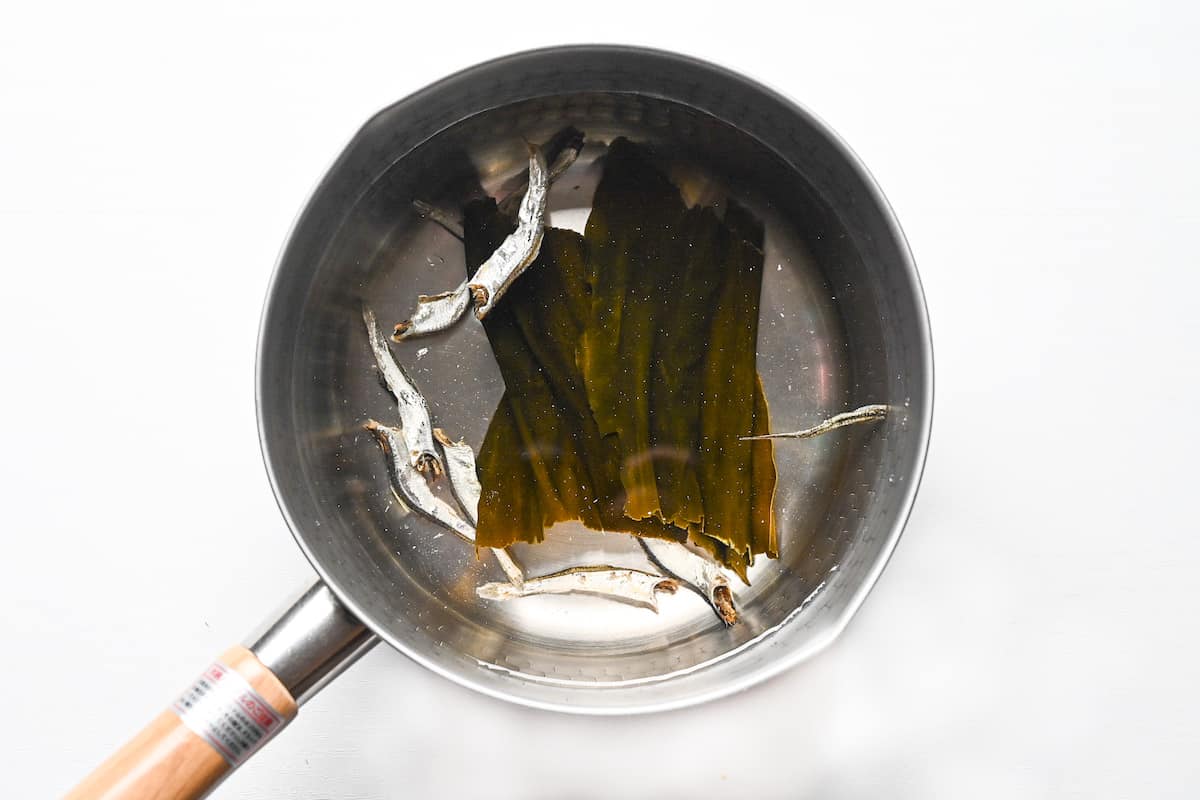
Add kombu and water, then soak for at least 30 minutes or until the kombu has expanded and softened. For a stronger taste, some people soak overnight. Cover the pot and store it in the refrigerator if you choose to do this.
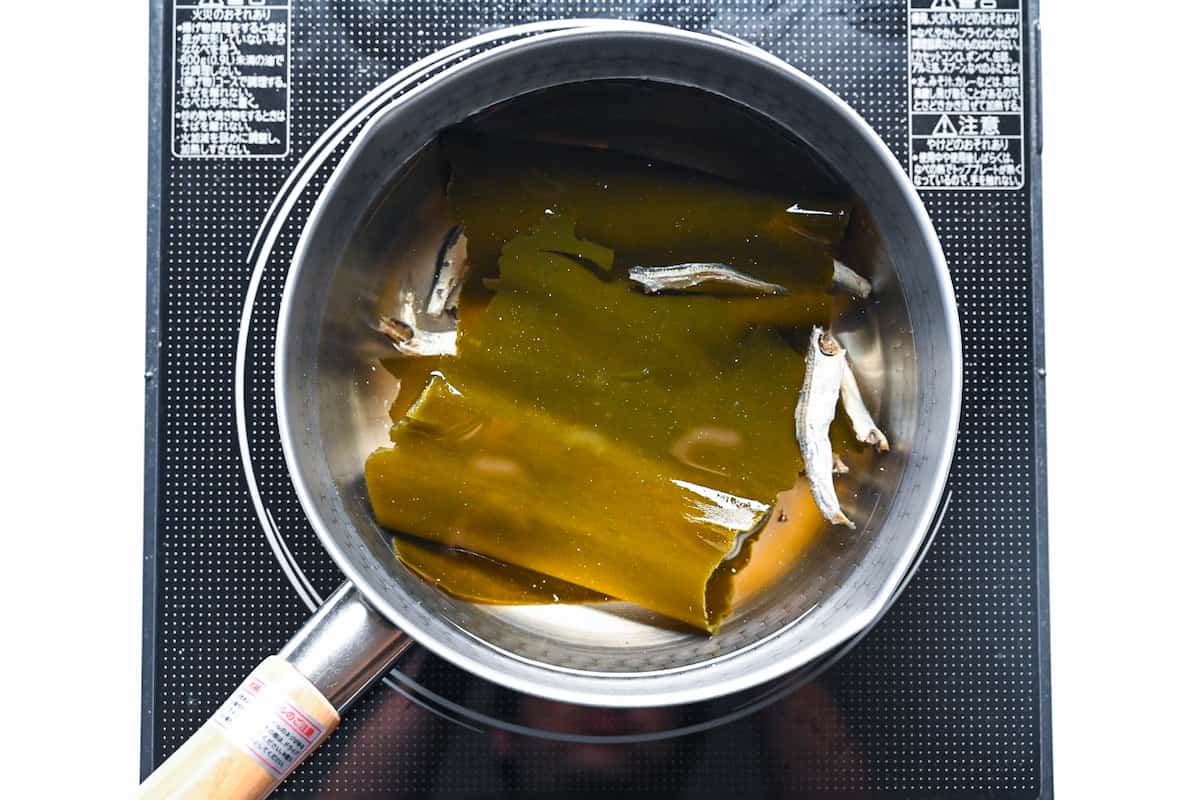
Place the pot on the stove and heat slowly over medium or medium-low. Slow heating will gently extract all the goodness in the kombu and niboshi. Be careful not to let it boil, as this can make the dashi bitter or slimy.
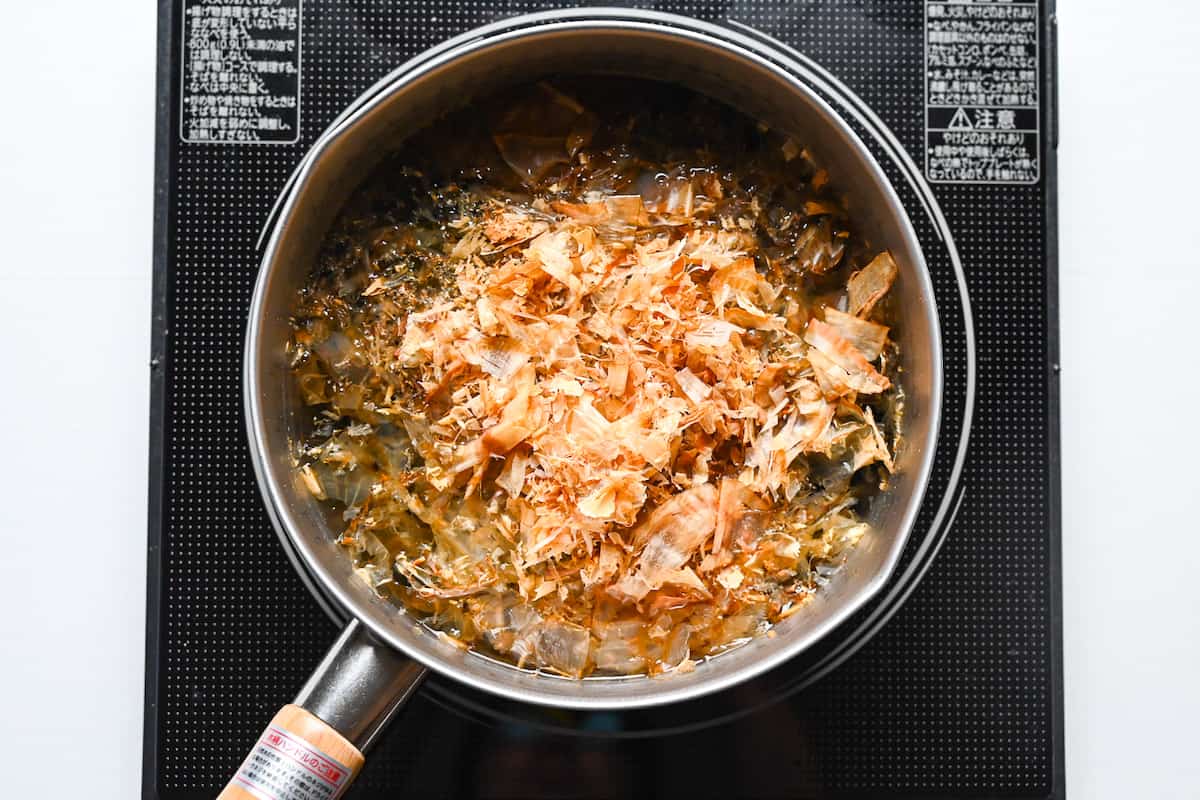
Once small bubbles start to appear around the edge, reduce the heat to the lowest setting and add the bonito flakes.
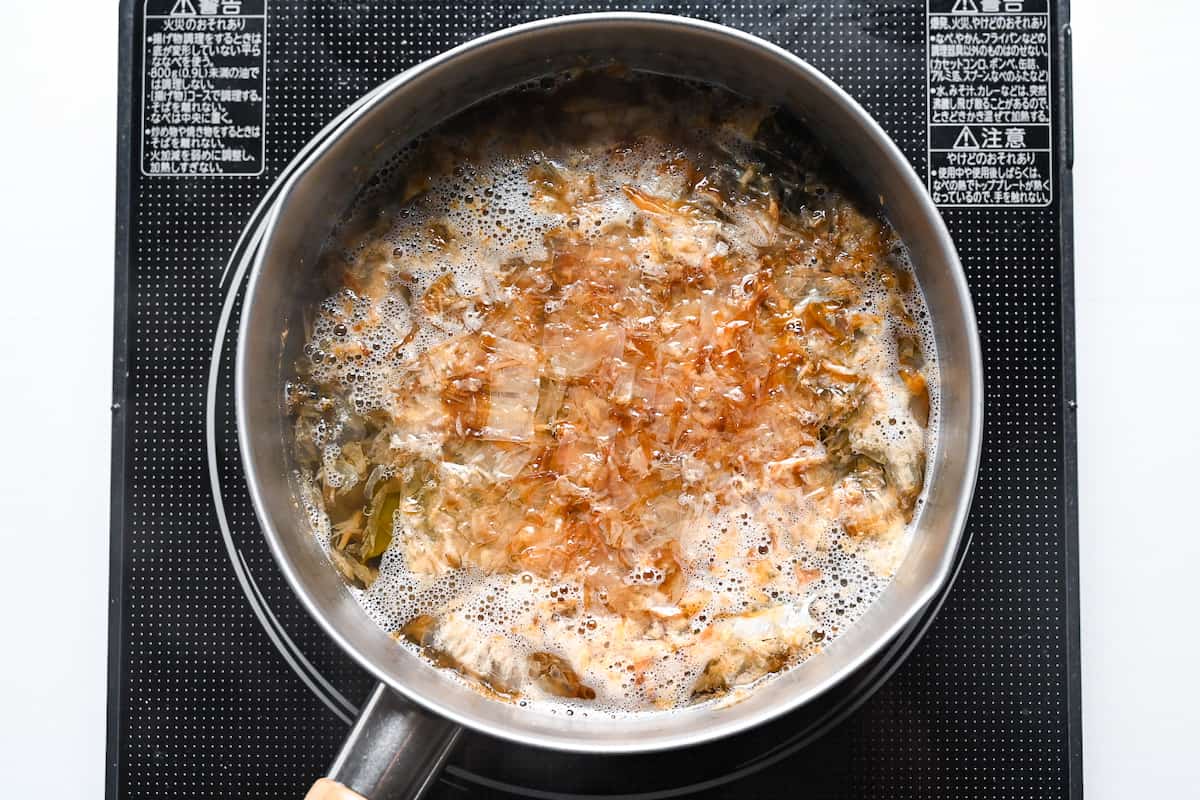
Simmer on low for 10 minutes and then remove from the heat.
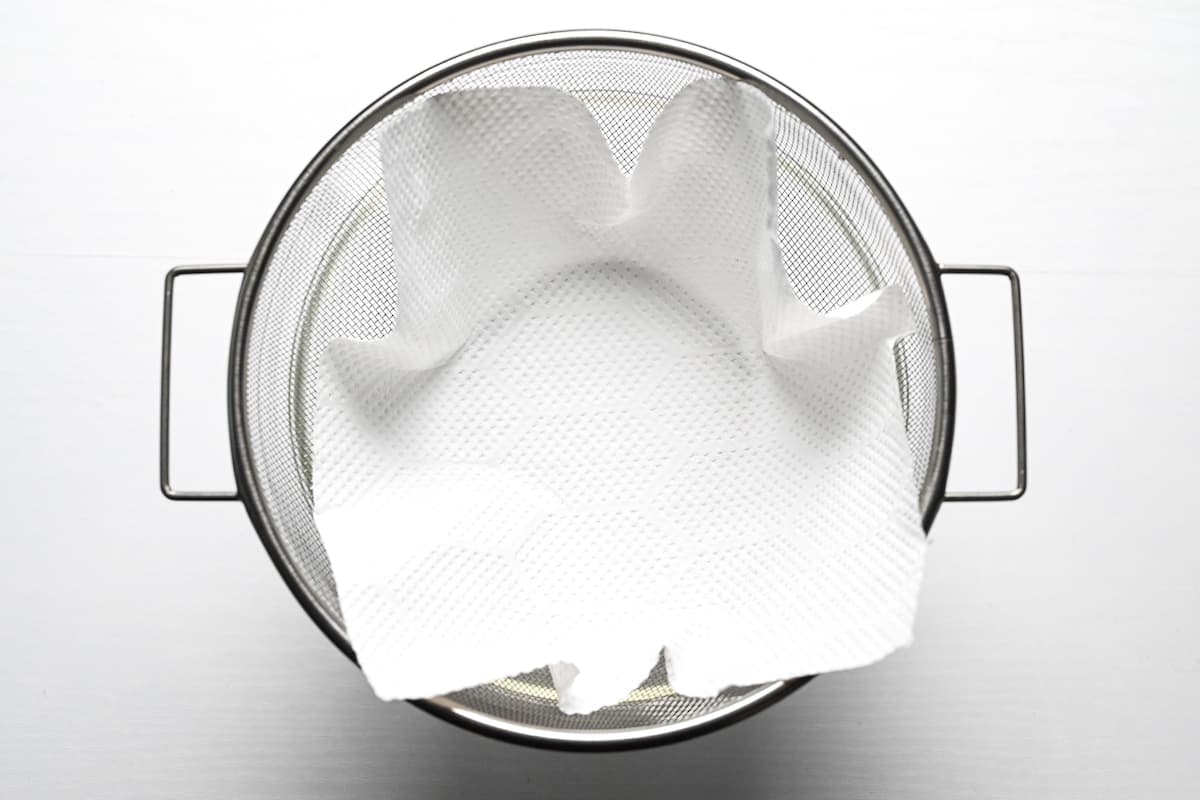
Place a sieve over a heatproof bowl and line it with kitchen paper. This will catch the tiny flakes of bonito, ensuring your broth is clear and flake-free.
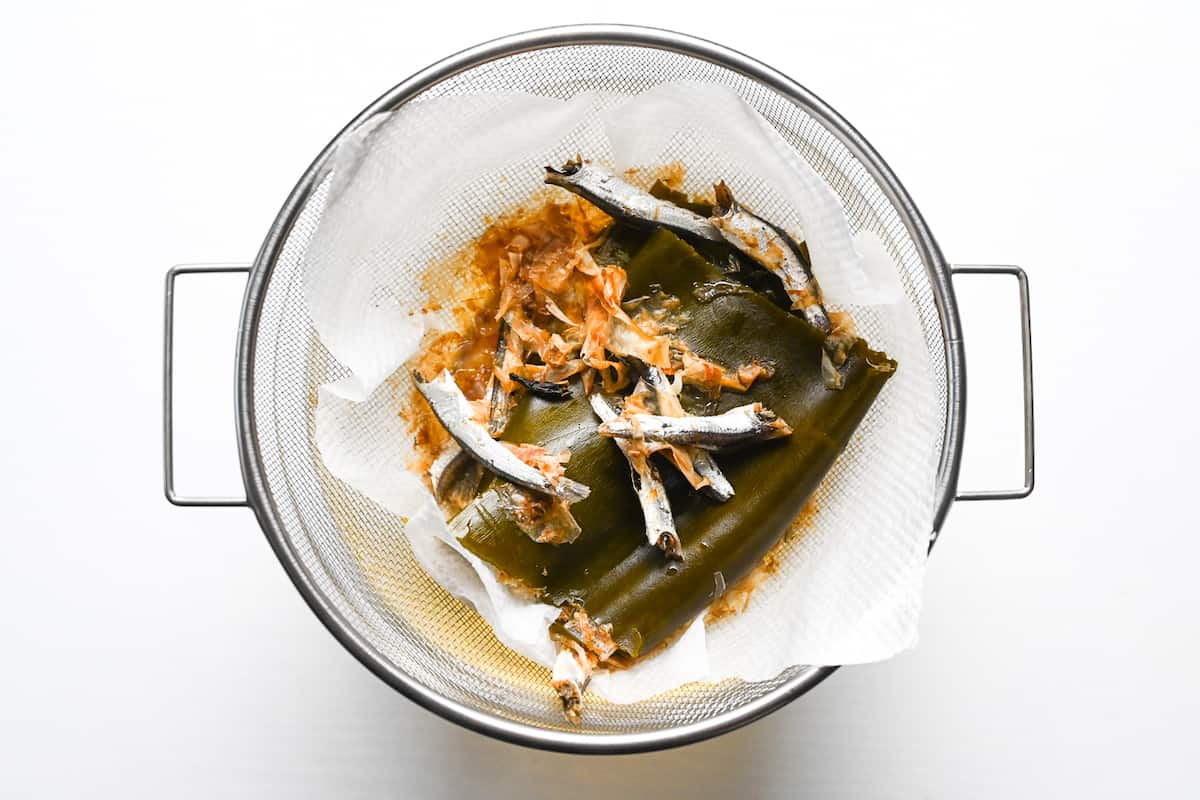
Pour the dashi through the sieve and gently squeeze the kitchen paper to try and save the dashi that has been absorbed.
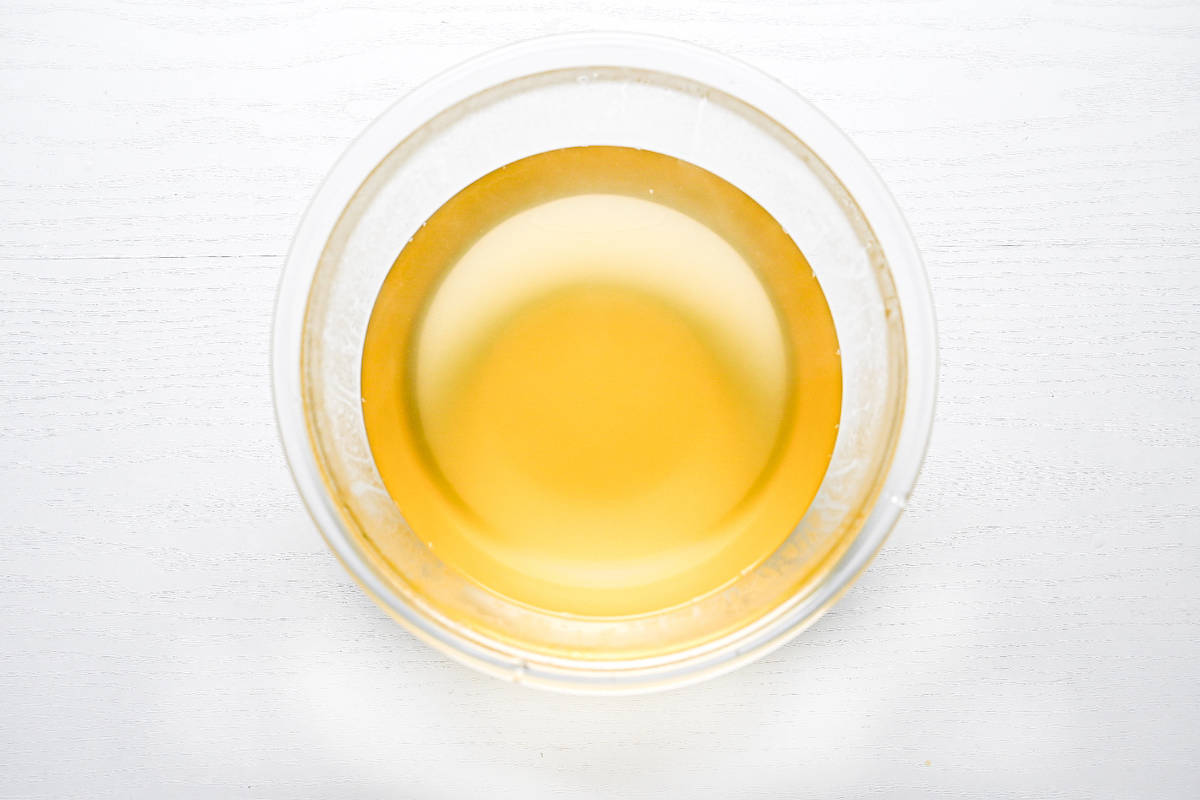
Use your homemade dashi to bring your Japanese cooking to the next level.
Enjoy!
Jump to Full Recipe MeasurementsReusing Dashi Ingredients
If it’s hard or expensive to find dashi ingredients in your country, you’ll be pleased to know that it’s possible to reuse them to make a second batch! Simply follow these steps:
- Take your used dashi ingredients and place them in a pot.
- Add 1 liter of water and an additional 7g of unused katsuobushi.
- Turn the heat on medium-high and bring to a boil.
- Once boiling, turn the heat on medium and cook until the liquid is reduced by 20%.
- Remove from the heat and strain the dashi with a sieve and kitchen paper like before.
- Rest until it’s cool to the touch, then pick up the kitchen paper and squeeze to release any excess dashi.
- Use immediately or store in the refrigerator and use within 1 week. (Be aware that the flavor deteriorates every day that you keep it, so try to use it sooner rather than later!)
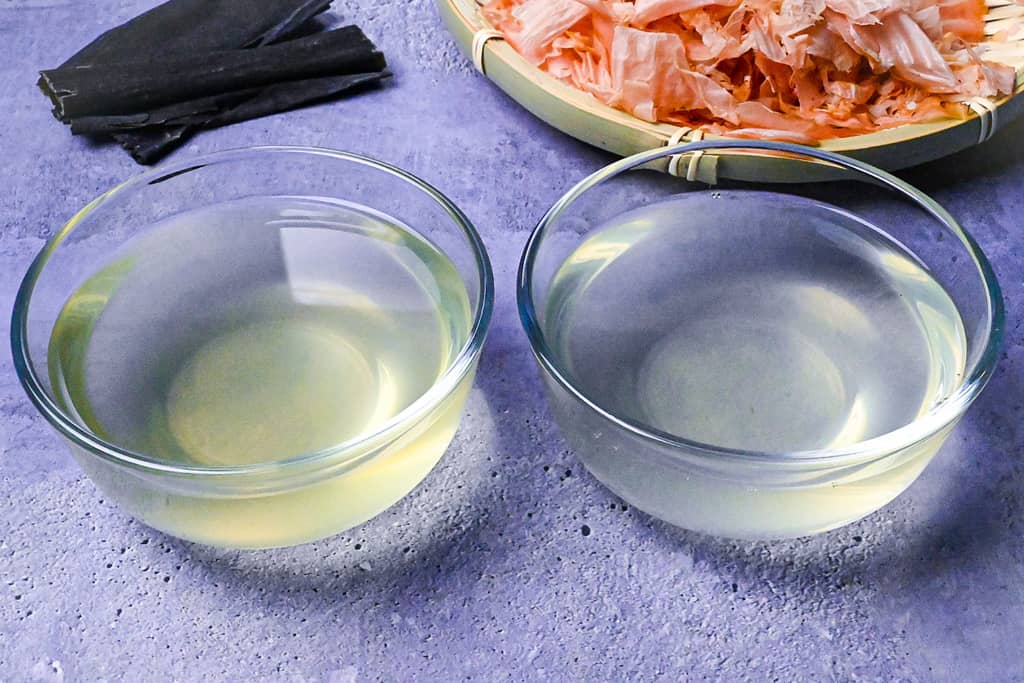
Alternatively, you can use leftover kombu to make onigiri rice balls! Check out my kombu onigiri recipe!
How to Store
Preparing a big batch of dashi in advance can save time, but it’s important to store it correctly to preserve its freshness and flavor. Avoid storing dashi at room temperature as it can quickly spoil.
Refrigeration is a suitable option for those who intend to use the dashi within a short time. However, it’s crucial to let the hot dashi cool to room temperature before transferring it to an airtight container such as a jar or Tupperware. Seal the container and store it in the fridge for up to a week.
To keep a larger stock of dashi for future use, freezing is the best option. Ensure the dashi has cooled down before sealing it in an airtight container, and divide it into portions for convenience. Properly stored dashi can be kept in the freezer for up to a month.
Storage summary
Room temperature – Not recommended.
Refrigerated – Up to a week.
Frozen – Up to a month.
FAQ
This is because the head has a strong bitter taste. But, some people enjoy this unique bitterness and choose to keep the head on.
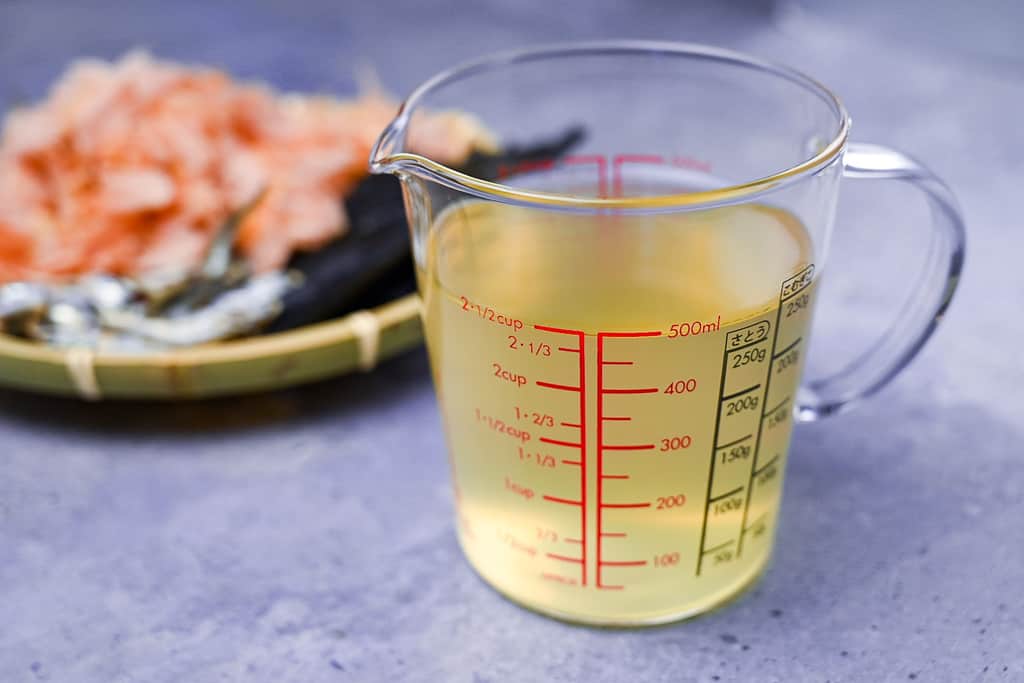
I hope you enjoy this My Favorite Awase Dashi recipe! If you try it out, I’d really appreciate it if you could spare a moment to let me know what you thought by giving a review and star rating in the comments below. It’s also helpful to share any adjustments you made to the recipe with our other readers. Thank you!
More Japanese Dashi Info

My Favorite Awase Dashi with Niboshi, Katsuobushi and Kombu
Equipment
Ingredients
- 10 g dried sardines (niboshi) niboshi
- 10 g dried kelp (kombu) kombu
- 1100 ml cold water
- 15 g bonito flakes katsuobushi
Instructions
- Start by removing and discarding the heads of 10 g dried sardines (niboshi) and placing the bodies in a large pot.

- Add 10 g dried kelp (kombu) and 1100 ml cold water. Leave to soak for at least 30 minutes (or up to 24 hours) until the kombu has expanded and rehydrated.

- Transfer the pot to the stove and slowly heat over medium or a medium low setting. Be careful not to let it boil.

- Reduce the heat and add 15 g bonito flakes.

- Simmer on low for 10 minutes.

- Place a sieve over a heatproof bowl and line it with kitchen paper.

- Pour the dashi through the sieve to catch the small pieces of bonito flakes.

- Enjoy using your homemade dashi to make miso soup, noodle broths or hot pots!





A Simple and amazing recipe… It makes a great soup base for so many other recipes. Thank you!!
Thank you!
Fascinating!
Thank you!